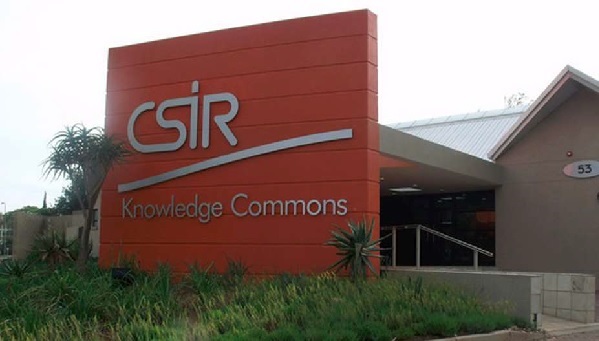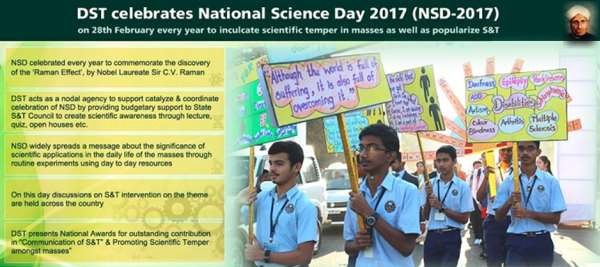
- Science & Technology Notes for UPSC IAS Prelims
- Home
- Science & Technology – Introduction
- Role of Science & Technology in Today’s Life
- Role of Science & Technology In India
- India: Development of Science & Technology
- Science & Technology Policy in India
- Information Technology
- Elements: Information Technology
- Cyber Crime & Cyber Security
- E-Infrastructure in India
- Artificial Intelligence
- Communication Technology
- Space Science & Technology
- Biotechnology
- Nanotechnology
- Ocean Technology
- Nuclear Technology
- Nuclear Energy in India
- Nuclear Energy - By Country
- India - Nuclear Program
- India - Defence Technology
- Space Exploration - Timeline
- Satellites Launched by India
- Indian Space Research Organisations
- Foreign Satellites Launched by India
- Government Space Agencies
- The DRDO
- Useful Resources
- Online Quiz
- Online Test
- Quick Guide
- Useful Resources
- Discussion
India: Development of Science & Technology
For the organized growth and development of Science and Technology in India, different specialized research and development agencies and organization are being set up.
Every organization specializes in a particular field to develop an advanced type of knowledge-based technology; for example, atomic industry is accountable to develop nuclear technology to fulfil the growing demands of energy.
Council of Scientific & Industrial Research (or CSIR) is a premier national Research & Development organization. CSIR is also accountable for the human resource development in the field of Science and Technology.

CAPART
During the seventh five-year plan (in 1986), the Council for Advancement of People’s Action and Rural Technology (CAPART) was established.
CAPART has been assigned with the task to catalyze and co-ordinate the emerging partnership between the Government and the voluntary organizations for sustainable development of rural areas.
Primarily, there were two organizations namely Council for Advancement of Rural Technology - CART and People’s Action for Development India - PADI; so, CAPART is a merger of these two organizations.
At present, CAPART is an autonomous body and is largely accountable for the rural development in India.
CAPART supports and promotes the voluntary organizations in planning and implementing the sustainable development projects especially in rural areas. The organizations also provides a platform for women, the physically challenged and disadvantaged groups to participate and promote the development.
Department of Science & Technology
The Department of Science & Technology (DST) plays a pivotal role in the promotion of science and technology in India.
DST has a huge responsibility; such as, at one end, it promotes high end research & development of cutting edge technologies; on the other hand, it provides technical skill sets and basic technologies to the common people.

Science & Technology Facts
Let us now discuss a few facts in the field of Science and technology.
At present, India is one of the most fascinating destinations for technology transactions in the world and it is ranked among the top five.
At present, about 27 satellites (out of which 11 facilitate the communication network to the country) are active and in operations.
Furthermore, India is ranked among the top ten nations in terms of the number of scientific publications.
As per the report of the National Association of Software and Services Companies (NASSCOM), the analytics industry of India is expected to touch about USD 16 billion by 2015 from the current USD 2 billion.
Very recently, with 1,000 MW capacity, the Kudankulam Nuclear Power Project Unit 1 (KKNPP 1) was set up.
The KKNPP I is located in Tirunelveli, Tamil Nadu.
To add to the existing project, with the same capacity (i.e. 1,000 MW), the Kudankulam Nuclear Power Project Unit 2 is under commissioning.
The DRDO, i.e., the Defense Research and Development Organization has tied up with Snecma, a French engine maker to develop the Gas Turbine and Research Establishment (GTRE); the GTRE will improve the performance of the Kaveri engines.
Kaveri engines are being used in ‘Teja’ the indigenous developed Light Combat Aircraft (LCA).
The Indian Space Research Organization (ISRO) has successfully completed its mission of developing India’s independent navigation system by launching the Indian Regional Navigation Satellite System (IRNSS – 1G).
IRNSS – 1G is the seventh navigation satellite and it will reduce the country’s dependency on US Global Positioning System.
India recently has become an Associate Member State of the European Organization for Nuclear Research (CERN); the motive is to increase the collaboration between India and CERN’s scientific and technological efforts and also promote the participation of Indian physicists, software engineers, and electronics hardware in global experiments.
The DHR (i.e. Department of Health Research), Ministry of Health and Family Welfare planned to set up a three-tier national network of Viral Research and Diagnostic Laboratories (VRDLs).
Under the project VRDLs, 160 VRDLs will be set up with the capacity to handle about 30 to 35 viruses of public health importance.
The Department of Biotechnology, Ministry of Science and Technology of the Government of India has now become the second country outside of Europe to have joined the European Molecular Biology Organization (EMBO).